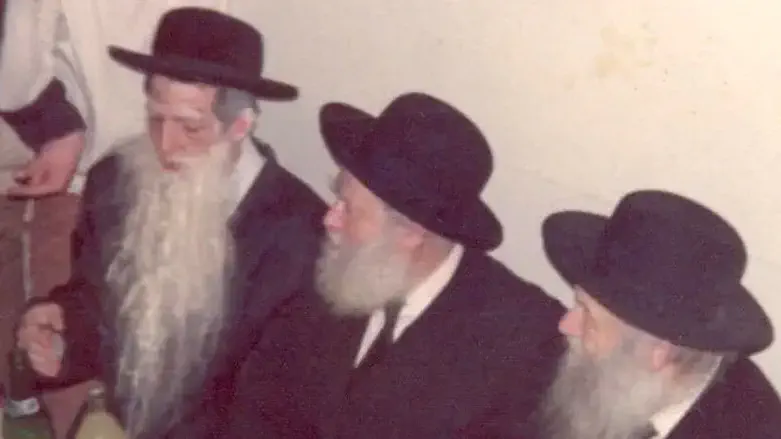
A young person approached me with a question:
“I know that with the beginning of the month of Adar, a person is supposed to be more joyous. This year, given the unfinished war against Hamas and the return of murdered hostages and the mass release of terrorists from prison, is it appropriate to be joyous in the face of this disheartening situation?”
First of all, being happy is a mitzvah that applies all through the year, not just in the month of Adar.
The source of the commandment to be happy is found in the Torah, as it says, “You shall be joyous in every good thing that the L-rd your G-d has given you,” (Deut. 26:11).
King David teaches the importance of joy in the worship of Hashem, “Serve the L-rd with joy; come before Him with singing,” (Psalms 100:2).
Just as joy is essential to the true practice of Judaism, a lack of joy is a grave wrongdoing. The Almighty chastised the Jews because they neglected this element in their observance of Torah, as it says, “In that you did not serve the L-rd with joy and willingness of heart,” (Deut. 28:47).
Rabbi Nachman of Breslov emphasized the greatness of joy in the service G-d in his famous teaching, “It is a mitzvah to be constantly joyous.” (Likutei Eitzot, Chapter on Simcha, 30).
It is written about the Arizal (Rabbi Yitzchak Luria) that his incredible wealth of insight into the secrets of Torah came through his joy in the performance of the commandments and in the joy of his learning, (“Lev David,” of the Hida, Ch. 14:3).
The Sages taught that a person receives more reward for the joy with which he does the mitzvah than for the mitzvah itself (Ibid).
I remember that after the crash of the disastrous explosion of the “Columbia” spacecraft, Rabbi Eliahu Leon Levi, of blessed memory, advised his students not to listen to radio broadcasts for the two days of Rosh Chodesh Adar, the beginning of the month. He feared that the sad news of the tragedy would spoil the special joy of Adar.
kThat advice is also appropriate today. In general, an over absorption in the news, listening around the clock to distressing broadcasts of the tragedies which seem to be falling upon us each day, this can lead to serious depression. While it is appropriate to hear a news broadcast once or twice a day, a daily overdose can produce negative psychological effects. Certainly every Jew should share in the ups and downs of the nation and not separate himself from the Clal, but an over-preoccupation with sadness is a pit to be avoided.
Similarly regarding Adar, a few years ago, when two military helicopters collided in the north of Israel, killing 73 Jewish soldiers, just before the beginning of Adar, I asked Rabbi Shlomo Riskin of Efrat whether, owing to the crash, we should be happy or sad during Rosh Chodesh Adar. He answered that in our time, the Jewish People have a constant sadness stamped into our characters over the destruction of the Temple and the exile of the Divine Presence. Therefore, he said, there was no conflict in experiencing both the emotional sadness over the helicopter tragedy and the spiritual joy of Adar’s arrival, as the Rabbis have commanded.
This understanding is congruent with Rabbi Soleveitchik’s perception of the Jewish character, as set forth in his book, “The Lonely Man of Faith.” There he pictures the Jew as a lonely, reflective and serious seeker, in search of his Maker. However, Rabbi Kook writes the opposite, saying that sadness stems from a soul polluted from personal sins and from the general sins of the world, (Orot HaT’shuva, 8:12; 14:6-7). Happiness, Rabbi Kook maintains, is the normal, healthy state of the Jewish People. If a Jew isn’t happy, then his inner melancholy and darkness need to be purged through the purifying, joy-filled light of t’shuva. He writes:
“When the light of t’shuva appears, and the desire for goodness beats purely in the heart, a channel of happiness and joy is opened, and the soul is nurtured from a river of delights,” (Ibid, 14:6. See, the book, “The Art of T’shuva,” Chapters 1, 7, and 9).
As the holiday of Purim approaches, just as Haman’s evil plans were thwarted by Hashem and turned into a celebration of triumphant joy for the Jews, so may all of our tragedies today be turned into a great salvation of “light, gladness, joy and honor,” (Esther 8:16).
Happy Adar!
[In the photograph, a young Purim-bearded Rabbi Samson is pictured with HaRav Avraham Shapira and HaRav Tzvi Yehuda Kook at a Purim celebration at Yeshivat Mercaz HaRav.)